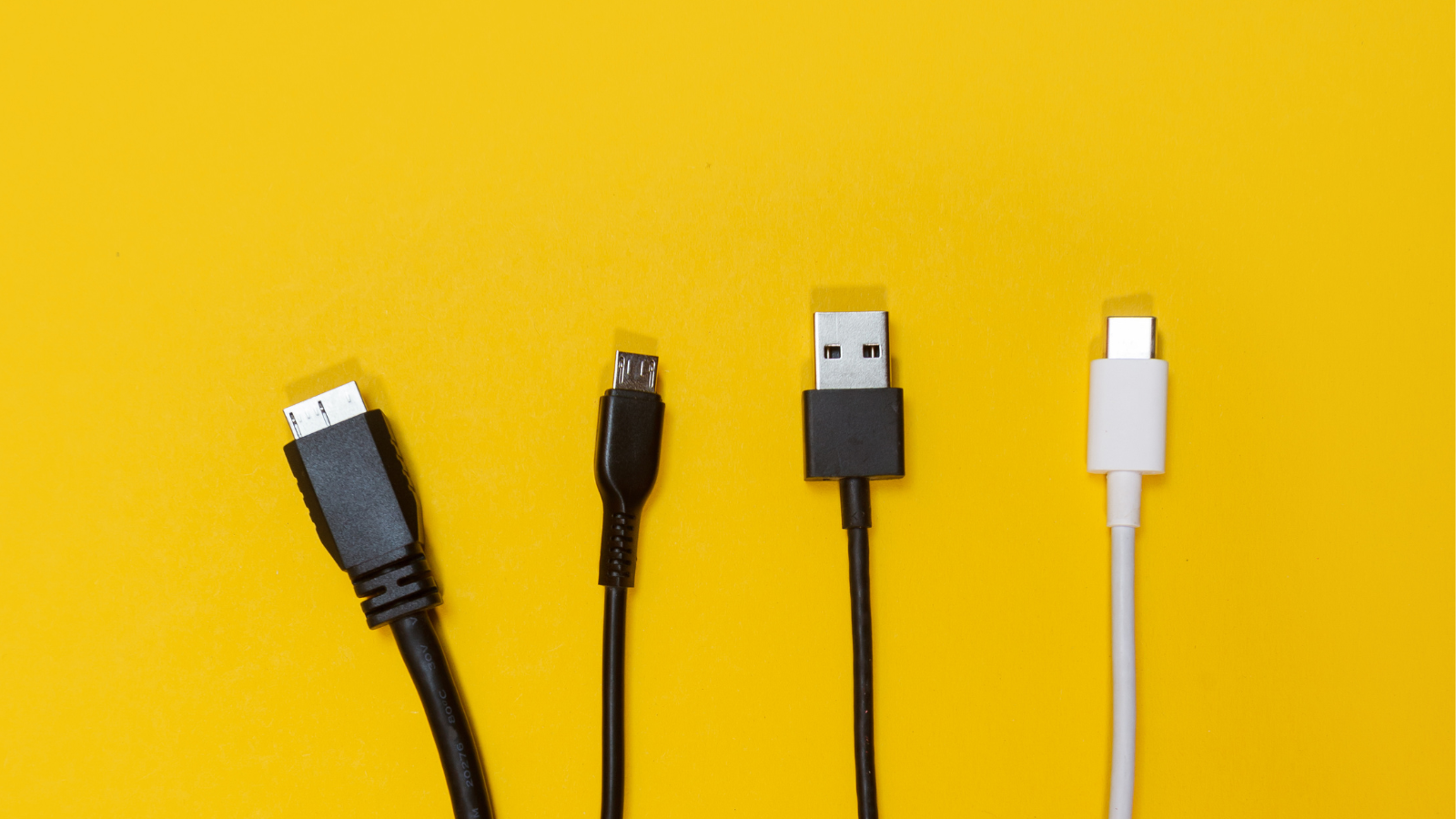If you’ve ever been around a computer, then you’ll have had a run in with a USB port or two. The Universal Serial Bus was first concocted in 1994 by a consortium of computing conglomerates, including the likes of Intel and Microsoft. It was introduced to standardise the connection between computers and peripherals, and is overseen by the USB Implementers Forum (USB-IF).
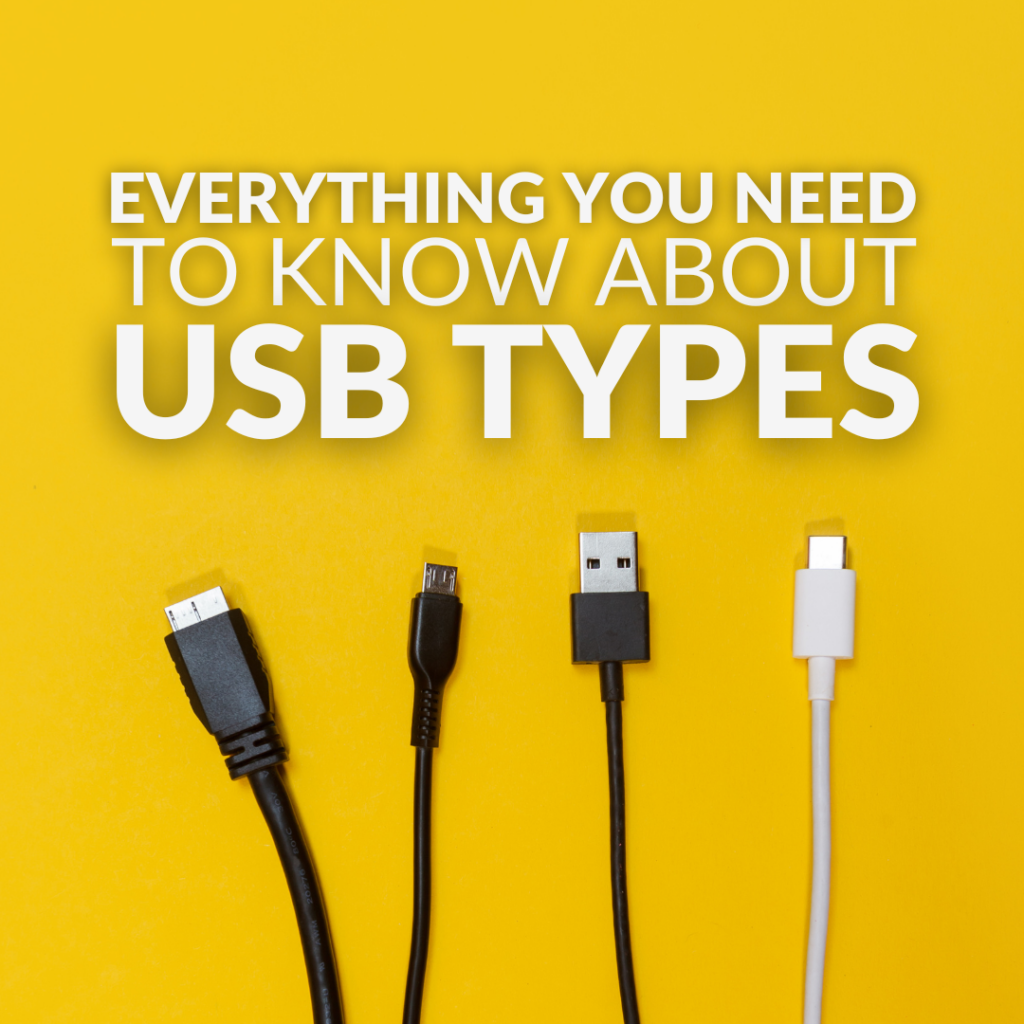
The technology has continuously advanced since then, with new types and versions regularly released. With so many iterations floating about, you might not understand why there are so many varieties or what purpose they actually serve. Through this post, we will walk you through each USB type, the different purposes they serve, how that relates to USB versions, and what uses each has.
USB Types and What They Mean
The USB Type refers to the physical shape of the connectors and ports you will find on cables and laptops. The connector (male) and the port (female) types must match. Alternatively, you will require an adapter.
USB Type A is the most common and considered the standard. You might know it colloquially as the one no one ever plugs in the right way up first time. It’s flat, rectangular interface can be found on almost any device or peripheral, being used to connect gaming computers and consoles up to keyboards, gaming mice, external hard drives, and more.
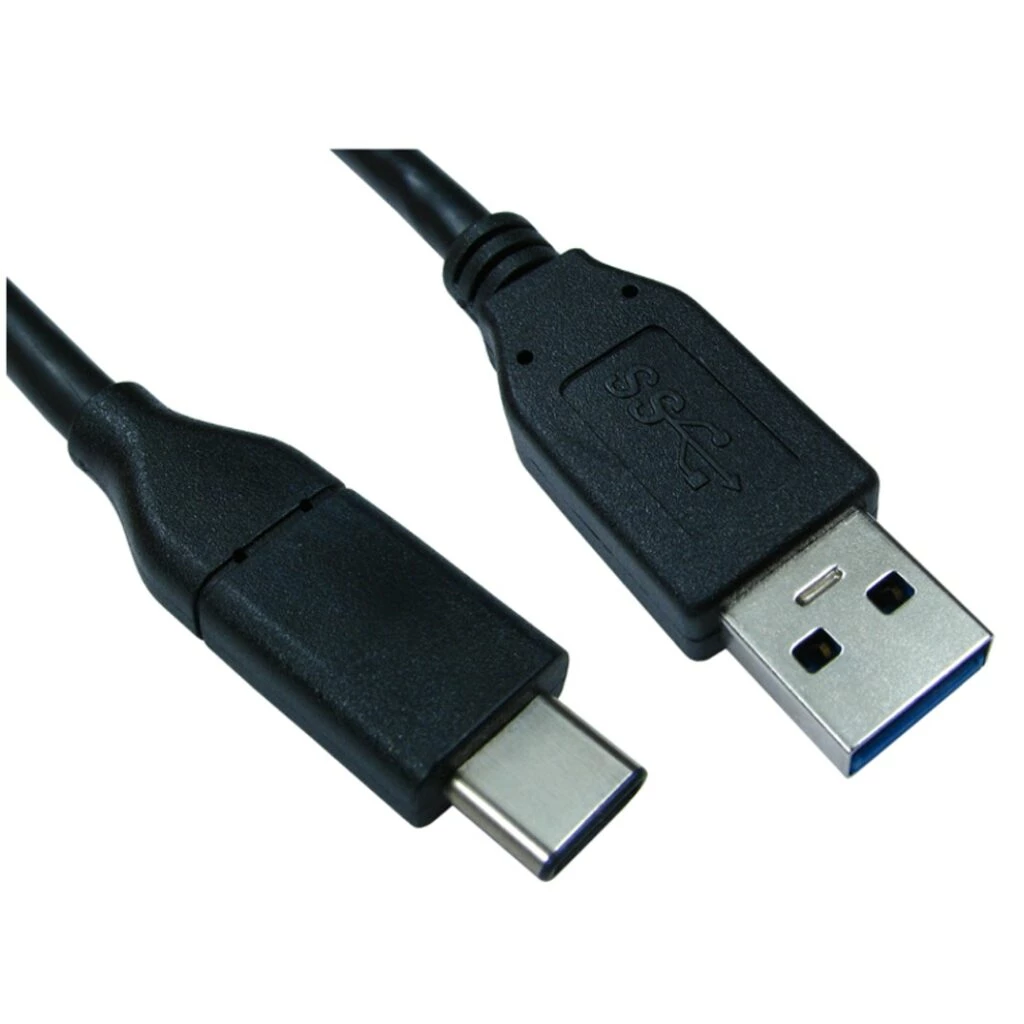
Next is USB Type B, though this is seen far less nowadays. This port is seen on larger, high-powered devices such as printers and scanners. As the size of these devices decreased and the support for wireless connections increased, this type has been used less and less. In fact, it is not supported beyond USB 3.2 Gen 2.
Both Type A and Type B have Mini USB and Micro USB versions. These compact versions are designed to support data transfer and charging on smaller devices, like digital cameras, smartphones, and tablets. Mini USB and Micro USB Type A support the USB 2.0 standard, while Micro USB Type B supports up to USB 3.2 Gen 2.
Lastly is the latest advancement in connectivity, USB Type C. Dubbed ‘future-proof’ by many, it is ostensibly a successor to Type A. It has a sleeker, more rounded design and a symmetrical interface, meaning it can be inserted either side up. Its small size eliminates the need for Mini and Micro USB, making it a one-size-fits-all solution. It is physically the same as a Thunderbolt 3 port, and the two can be used interchangeably.
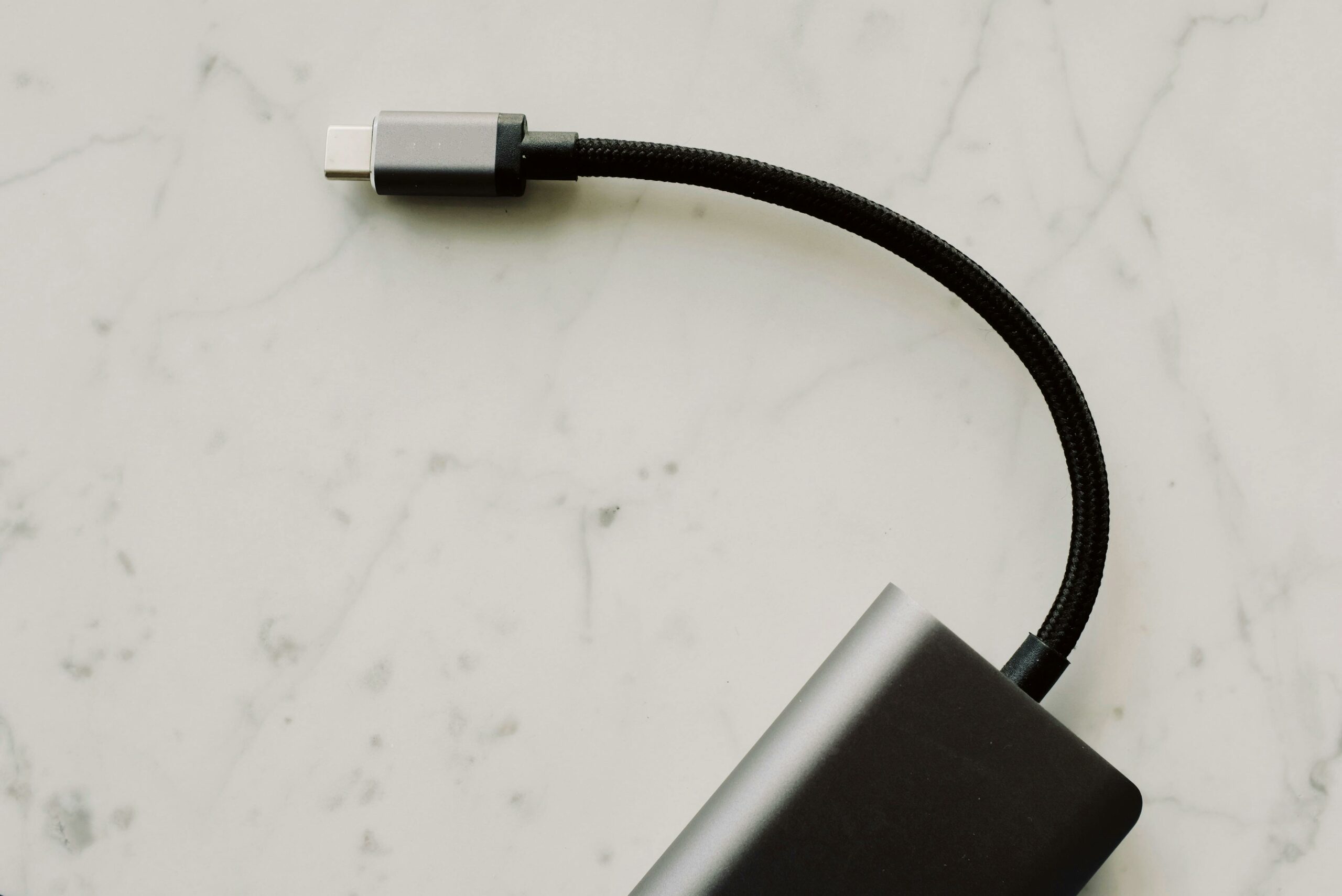
What Are the Different Speed Standards?
The speed standard, also called the version or protocol, does not refer to any physical aspect of the USB connector or port. It is referring to the technology allowing data to be transferred along a cable between two devices. The later the version, the higher the data transfer speed. USB 4 allows up to 40Gb per second. Everything from USB 2.0 onward also supports power delivery and USB 3.0 onward supports video.
The names of the speed standards are dictated by the USB-IF. This has led to some versions having multiple monikers as a result of revisions over time. For example, USB 3.0 can also be referred to as 3.1 Gen 1 and 3.2 Gen 1. To eliminate the confusing naming scheme, in 2022 the USB-IF changed the naming scheme for the standards to make them easier to understand by using the syntax of “USB xGbps” where the x is the speed of data transfer possible along a cable. One such instance of this, is USB 3.2 Gen 2×2 has now become USB 20Gbps.
While it is worth knowing the version of your devices, it is not essential. This is because they are backward compatible. That means a gaming computer that supports USB 3.1 and has a Type A port could still work with a cable using a 2.0 connector, just at slower speeds.
USB Types and Versions at a Glance
In the table below, you can find the speeds of USB available, under the 2022 USB-IF naming scheme. Alongside this, you can also see what these connectors were previously called and their alternative names, in addition to what USB types they are compatible with. This should help you to chart how USB technology has evolved and where your current hardware sits.
| Name | Previously Known As | Also Called | Speed | Dual Lane | Speed per Lane | Connectors |
| USB 2.0 | USB 2.0 | Hi-Speed USB | 480 Mb/s | No | N/A | Type A Type C (rarely) |
| USB 5Gbps | USB 3.0 (USB 3.1 Gen 1) (USB 3.2 Gen 1) | SuperSpeed USB 5Gb/s | 5 Gb/s | No | N/A | Type A Type C |
| USB 10Gbps | USB 3.1 (USB 3.1 Gen 2) (USB 3.2 Gen 2) | SuperSpeed USB 10Gb/s | 10 Gb/s | No | N/A | Type A Type C |
| USB 20Gbps | USB 3.2 (USB 3.2 Gen 2×2) | SuperSpeed USB 20Gb/s | 20 Gb/s | Yes | 10 Gb/s | Type C |
| USB 20Gbps | USB 4 (USB 4 Gen 2×2) | USB4 20Gb/s | 20 Gb/s | Yes | 10 Gb/s | Type C |
| USB 40Gbps | USB 4 (USB 4 Gen 3×2) | USB4 40Gb/s | 40 Gb/s | Yes | 20 Gb/s | Type C |
What USB Standard is my Port?
Your computer may have a selection of different coloured USB ports, these each are coded to show what version of USB the port is compatible with. The following table lists what these colours indicate.
| Colour | Port Type | USB Standard | Notes |
| White | USB-A or USB-B Micro USB-A | USB 1.x | |
| Black | USB-A or USB-B Micro USB-B | USB 2.0 | |
| Blue | USB-A or USB-B | USB 3.0 | |
| Teal | USB-A or USB-B | USB 3.1 Gen 1 | |
| Red | Sleep-and-Charge USB-A | USB 3.1 Gen 2 USB 3.2 | Usually denotes a port that stays active when a computer is off or in standby |
| Yellow | Sleep-and-Charge USB-A | USB 2.0 or USB 3.0 | Usually denotes a high-power delivery port that stays active when the computer is off or in standby |
| Orange | Sleep-and-Charge USB-A | USB 3.0 | Usually denotes a port that stays active when a computer is off or in standby |
Why Are Older USB Types Still Used?
In a nutshell, it’s because USB Type A has not been rendered obsolete. It may be slower, but it is also cheaper to use when producing peripherals for the mass market. Not only that, if you have a faithful keyboard or gaming mouse with Type A connectors that still does the job for you, then accessibility is the priority over data transfer speeds.
When it comes to power delivery, USB Type C shines. Smartphones, tablets, and even portable gaming systems, such as the Switch and Steam Deck, have adopted USB Type C. This port facilitates quick charging, and its small size means devices can be slimmer and therefore more portable. Not only this, but gaming laptops typically use USB Type C to charge, thanks to its phenomenal power delivery. In fact, USB Type C can deliver up to 240W of power, versus Type A’s paltry 4.5W.
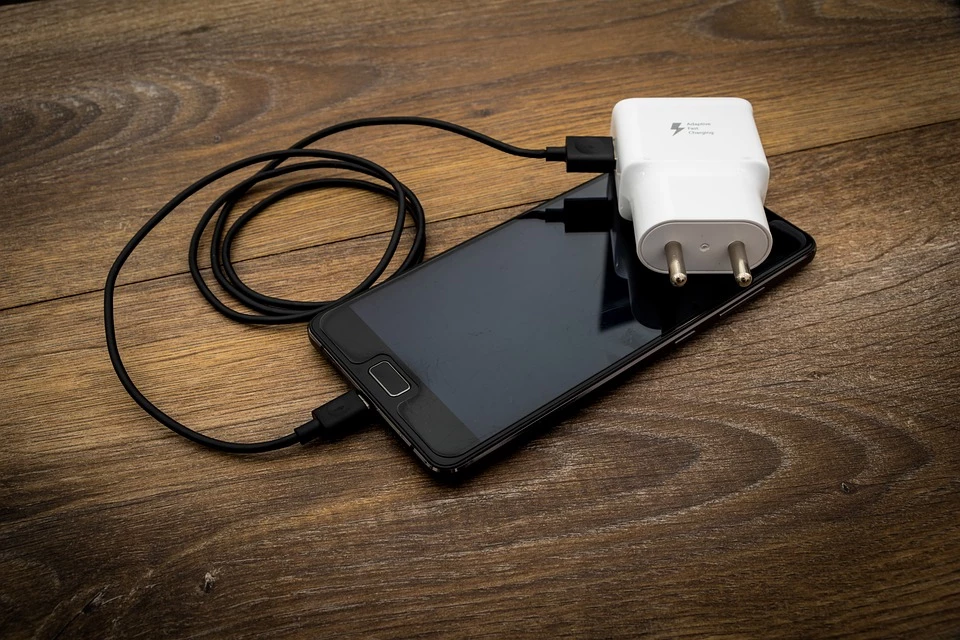
Time For Some Upgrades?
Now that you should have a better understanding of the technology, you can make sure you’ve got the best hardware. We here at Overclockers UK have plenty of peripherals and accessories to help you make the most of your gaming computer’s USB capabilities.
Streamplify HUB CTRL 7
Need to organise your streaming set-up? The Streamplify HUB CTRL 7 Deck has you covered. It features seven slots for connecting your devices – six USB 3.0 and one USB 2.0 – each with LED power indicators. You can customise your hub further with sixteen swappable acrylic icons, helping you keep track of what’s plugged in each port. There are even controllable RGB lighting effects adding plenty of style to its functional form.
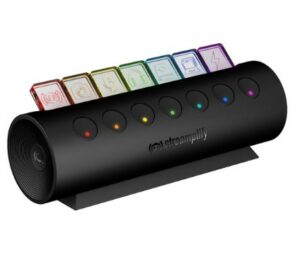
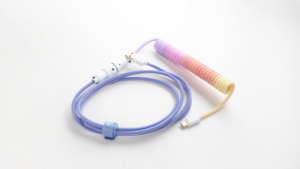
Ducky Keyboard Coiled Cable V2 Afterglow
Level up your gaming setup by adding a splash of colour. The Ducky Coiled Cable V2 Afterglow utilises a beautiful colour gradient that moves from pastel purple, through pink, then orange, to yellow. This cable is specially designed to work with mechanical keyboards, boasting support for polling rates of up to 1000Hz. This cable comes in two parts, with the long section featuring a USB-A connector, whilst the coiled section uses a USB-Type C. These are connected via a 5-pin aviation head, that securely locks them together ensuring a secure connection between your keyboard and PC.
USB Cables
Since you’re up to snuff on the different USB types and speed standards, make sure you’ve got the best cables for every job. We stock a variety of USB cables, for everything from connecting Type A to Type C, longer and replacement options, and even upgrading the speed standard you are working with to improve performance.
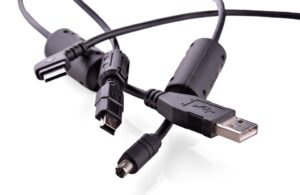
What’s Your Favourite USB Device?
USB as its name suggests, has become a universal part of our day to day lives, whether you’re connecting a keyboard to your PC, charging your phone, or adding extra functionality to devices, such as Bluetooth connectivity, USB is behind it all. With all the myriad of applications for USB, what is the strangest implementation you’ve seen for using USB. Let us know in the comment section below.
